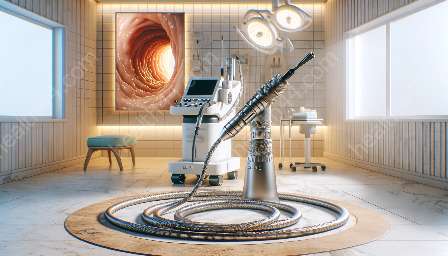Pediatric endoscopes have significantly transformed the way medical professionals diagnose and treat pediatric patients. These specialized devices offer unique benefits for evaluating and managing gastrointestinal and respiratory conditions in children, contributing to improved healthcare outcomes for young patients. In this comprehensive guide, we will delve into the world of pediatric endoscopes, exploring their features, applications, and compatibility with medical devices and equipment.
Understanding Pediatric Endoscopes
Pediatric endoscopes are medical instruments designed specifically for examining the internal organs and pathways of infants and children. These devices incorporate advanced imaging technologies and miniaturized components to ensure safe and effective diagnostic procedures in young patients. By using pediatric endoscopes, healthcare providers can visualize and assess various conditions affecting the gastrointestinal tract, respiratory system, and other critical areas in pediatric medicine.
Applications and Benefits
Gastrointestinal Evaluation
One of the primary applications of pediatric endoscopes is the evaluation of gastrointestinal conditions in children. These devices enable healthcare providers to investigate issues such as chronic abdominal pain, recurrent vomiting, and gastroesophageal reflux disease (GERD) in pediatric patients. Through minimally invasive procedures, pediatric endoscopes empower medical professionals to diagnose and treat conditions like esophagitis, gastritis, and peptic ulcers in children, ultimately improving their quality of life.
Respiratory Assessment
Pediatric endoscopes are also instrumental in assessing respiratory conditions in children. By utilizing bronchoscopes and laryngoscopes, healthcare providers can examine the airways and lungs of pediatric patients, aiding in the diagnosis and management of respiratory disorders such as asthma, bronchiolitis, and pneumonia. The efficient visualization provided by pediatric endoscopes allows for precise identification of respiratory abnormalities, facilitating targeted treatment strategies and enhanced patient care.
Compatibility with Medical Devices and Equipment
Pediatric endoscopes are engineered to seamlessly integrate with various medical devices and equipment, ensuring optimal performance and utility in pediatric healthcare settings. These endoscopes are compatible with specialized imaging systems, light sources, and video processors that enable high-definition visualization and documentation of pediatric endoscopic procedures. Furthermore, advancements in endoscopic instrumentation and accessories have enhanced the versatility and adaptability of pediatric endoscopes, providing healthcare providers with comprehensive solutions for pediatric diagnostic and therapeutic interventions.
Pioneering Pediatric Care
The introduction of pediatric endoscopes has revolutionized the field of pediatric care, offering innovative solutions for diagnosing and treating a wide range of medical conditions in young patients. The ability to perform minimally invasive procedures with pediatric endoscopes minimizes discomfort and risk for pediatric patients, leading to improved compliance and acceptance of medical interventions. Moreover, the continuous evolution of pediatric endoscopic technologies and techniques has opened new avenues for pediatric gastroenterologists, pulmonologists, and other specialists to deliver personalized and effective care to children across the globe.
Enhancing Medical Practices
By incorporating pediatric endoscopes into medical practices, healthcare facilities can elevate their standards of care and diagnostic capabilities for pediatric patients. The versatility and precision offered by pediatric endoscopes contribute to accurate diagnoses, targeted therapies, and favorable outcomes for children facing complex medical issues. Moreover, the integration of pediatric endoscopes with advanced medical devices and equipment promotes seamless workflow efficiency and resource utilization, ultimately enhancing the overall effectiveness of pediatric healthcare services.
Conclusion
Pediatric endoscopes represent a pivotal advancement in pediatric medicine, offering tailored solutions for diagnosing and managing gastrointestinal and respiratory conditions in children. With their compatibility with medical devices and equipment, pediatric endoscopes have become indispensable tools for medical professionals dedicated to delivering exceptional care to pediatric patients. As technology continues to evolve, pediatric endoscopes are poised to further enhance pediatric healthcare practices, empowering healthcare providers to make impactful contributions to the well-being of children worldwide.


